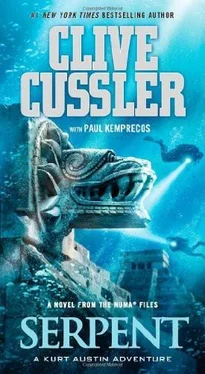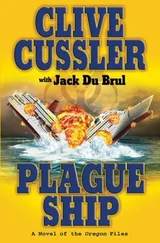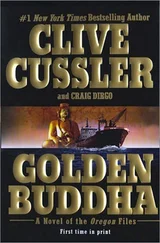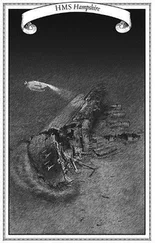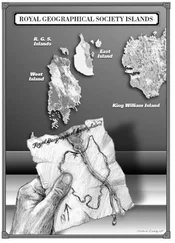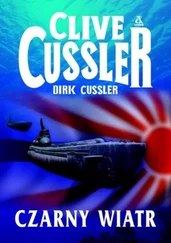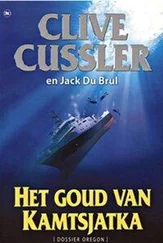Zavala winked at Austin. "With any luck we can do it between breakfast and lunch and celebrate at dinner"
"Hmm," Orville said with a smirk. He leaned forward and pointed his finger at the two NUMA men "And they say I'm a nutcake."
Nantucket Shoals
39 THE MINI-SUBMERSIBLE WAS BARELY a few fathoms below Nantucket Sound's blue-green waters, and Austin was already having second thoughts about diving with Zavala. His misgivings had nothing to do with Zavala's skill as a pilot. There was hardly a craft in, on, or above the water Joe couldn't operate. It was his offkey singing. As the crane lifted the two-passenger craft off the deck and into the water Zavala had broken into a Spanish rendition of "Yellow Submarine."
Austin barked into his microphone, "Do you know any other songs?"
I'm taking audience requests."
"How about singing `Far Far Away'?"
Zavala's quiet laughter came over the earphones. "Gee, I haven't heard that one since I was a muchacho. "
"Desperate times call for desperate measures."
"No problema. It sounds better with a guitar anyway. Where do you want to go, amigo?"
"How about down for starters?"
Zavala's wave of acknowledgment was visible through the observation bubble that was so close Austin could have reached out and touched his colleague on the shoulder if not for the plexiglass that enclosed their heads. The twin domes were mounted at the front of the minisub, jutting at an angle from its flat green ceramic surface like the bulbous eyes of a frog.
The Deep Flight 11 was unlike most deep ocean submersibles and bathyscaphes which tended to be shaped like a fat man, rotund and thick around the waist. It looked more like a futuristic fighter plane than an undersea vehicle. The fuselage was rectangular and flat, with the leading and trailing edges tapering like the business end of a chisel. The sides were perpendicular to the flat top and bottom with sharp edges as if canvas had been stretched over a frame.. The wings were stubby and squared off and equipped with fixed running lights. Thruster fans were mounted behind the wings and observation domes. At the front were a pair of manipulator arms and a movable spotlight.
Unlike the crew of a traditional submersible, who sat upright as if at a desk, Austin and Zavala lay prone, Sphinx-like, face forward, strapped into form-fitting pans, elbows set into padded receptacles. They had dual controls, including a joystick for elevation and another for speed. Zavala handled the sub while Austin took care of the other systems such as lights, video, and the manipulator arms. He kept an eye on the heads-up digital display that contained compass, speedometer, and odometer and controls for depth gauge, air-conditioning, strobe unit, and sonar. The craft was slightly buoyant and, dove by moving through the water and adjusting the elevators in its tail section like an airplane.
Their bodies were elevated at a thirty-degree angle to simulate the natural position of a person swimming. This attitude also made rapid descents and ascents less frightening. The space was adequate for Austin's six-foot-one height but snug around his broad shoulders. Still, he had to admit, even with Zavala's serenade it was a pleasant way to scout out a wrecked ocean liner.
The wreck was marked by a red spherical buoy. Zavala put the sub into a slow series of descending circles around the buoy line which ran down one hundred eighty feet from the surface to a length of chain attached to the third port-side lifeboat davit. Normal descent to the highest part of the wreck took three to four minutes. With its five-knot speed the minisub could make the trip in a fraction of that time, but Austin wanted to get a feel for the environment they would be working in. He asked Zavala to ease them to the bottom.
The deepening water filtered the colors out of the sunlight streaming down from the surface. The red tints disappeared first, then on through the spectrum. At five fathoms all hues had been lost except for a cold bluish green. In compensation for the artificial dusk, the water became as dear as fine crystal as the sub broke through the warmer layers of thermocline where particles of vegetation were held in suspension. The sub corkscrewed lazily into the sea around the anchor line. A huge dark mass loomed from the pale bottom sand and filled their vision.
With the excellent visibility the sub had been running without lights. At a depth of one hundred twenty feel. Zavala flattened their trajectory, slowed the minisub's speed to a crawl, and switched on the craft's belly light. The ship lay on its side. The large circle of illumination transformed a section of the hull below them from black to a cadaverish grayish green broken here and there with leprous splotches of yellow and rust stains like dried blood. The patina of marine growth, made up of millions of sea anemones, stretched off into the dimness beyond the reach of the light.
Austin found it difficult to imagine that this huge dead leviathan was once one of the fastest and most beautiful ships afloat. It is possible to stand before a building as tall as the Doria was long and not be awed by its size. But if that same seven-hundred-foot tower is tuned horizontally and placed by itself on a flat empty plain, its immensity becomes breathtaking.
Lying on its starboard or right side, hiding the fatal gash from the Stockholm's sharp beak, the Doria looked like a monstrous sea creature that had simply lain down to rest, had fallen asleep, and was now being reclaimed by the sea. The mini. sub switched on its video camera and glided toward the stern, staying a short distance above the rows of portholes. Dwarfed by the massive hull, the craft resembled a little bug-eyed crustacean checking out a whale. Near the sixteen-ton portside propeller
Zavala made a sharp turn and passed over the sharply etched black rectangles that once served as windows to the promenade deck. When open water appeared he dropped the sub down to a depth of two hundred feet and pointed the craft back toward the bow on a path parallel to their earlier course: The multi-tiered decks were a ninety-foot-high vertical wall off to their left. They moved past the three swimming pools that had once cooled passengers according to class on their transatlantic passage, scudding along the lifeboat deck whose davits didn't work any better now than they did in 1956.
Dozens of fishing nets had become snagged on the hook-like davits. The nets veiled the decks like great shrouds draped over an immense bier. The mesh was coated with a hoary cloak of marine growth. Some nets, held aloft from the wreck by their buoys, were still snaring fish from the schools of large pollock and cod that darted dangerously close. Noting the rotting bones caught in the mesh, Zavala wisely kept the mini-sub at a respectful distance from the still dangerous nets.
The ship's great red-and-white smokestack had fallen off, leaving an immense square shaft down to the engine room. Other openings marked uncovered staircase wells. The superstructure had slipped off and lay in a jumble of disintegrating debris on the sea bottom. With its distinctive stack and superstructure gone the Andrea Doria looked more like a barge than a ship. Only when they glided by the remnants of the wheelhouse and saw the massive booms, winch heads, and bollards intact on the foredeck did they began to get the sense that this was a huge passenger liner. It was hard to believe a vessel this big could ever sink, but that's what they said about the Titanic, Austin reminded himself.
They had been as reverent as mourners at a funeral, but now Austin broke the silence. "That's what thirty million dollars looks like after a few decades at the bottom of the sea."
"Hell of a lot of money to pay for an oversized fish, catcher," Zavala said.
"That's just for the hull. I didn't count the millions in furnishings and artwork and four hundred tons of freight. The pride of the Italian navy."
Читать дальше
